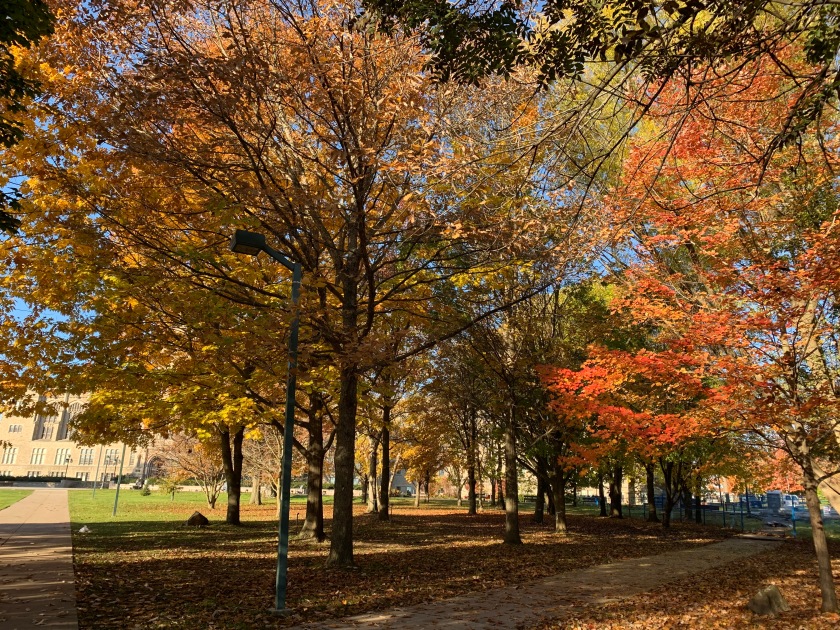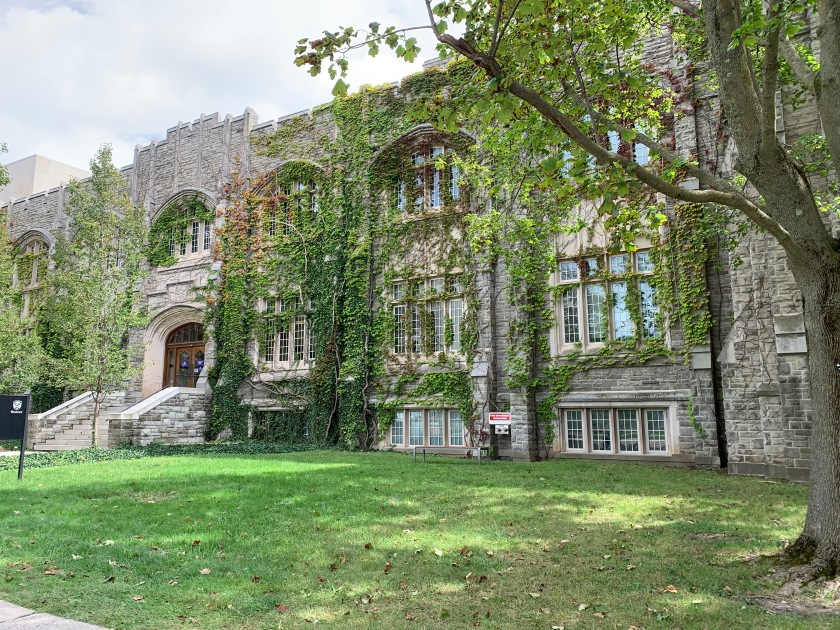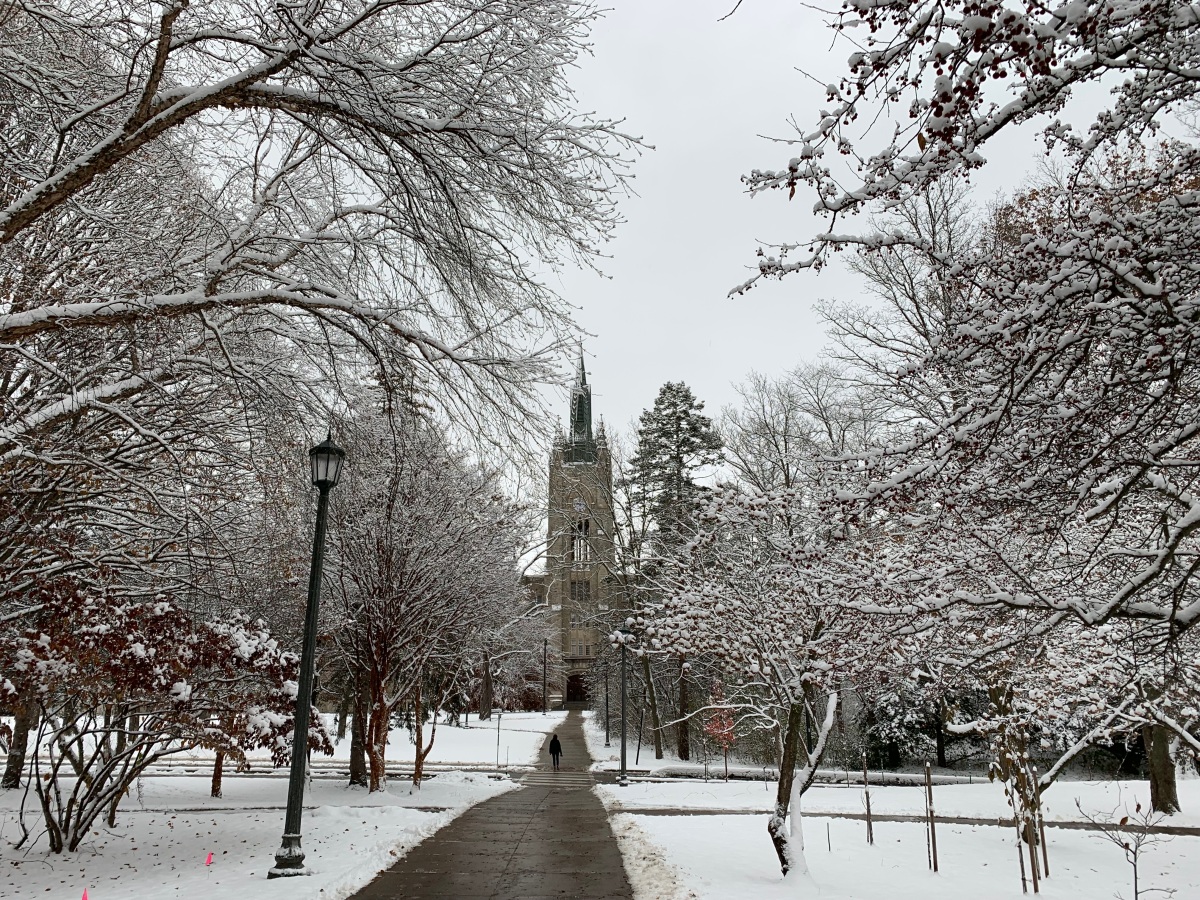Writing teaches us many things, and the necessity of patience is foremost. We must wait with our story. Be patient to learn its ending. We must be compassionate with our characters. Be patient to learn who they are. We must manage our expectations about our narrative skills. Be patient as we practice, almost endlessly, it seems. Be patient with how much we do, how fast we work. Protect the creative energy. It may seem that we are always waiting, never fully reaching the thing we are trying to get to. But when it comes, it can come fast—the story rushing at us, overwhelming, and leading us to wish it away again.
In these past two years none of us has really known what the next year will be like, or the next month, or week. The uncertainty crawls into the belly, lives like a parasite in our guts. Meanwhile, in our most-human and paradoxical mind, we struggle with the everyday mundaneness of living, working, studying, cooking, eating, reading, fighting, loving, sleeping, laughing, crying, and doing-everything-at-home boredom.

Regardless of whether we are writers or not, artists or not, inventors or not, there is a rhythm to human life that moves us naturally into balance of doing and retreating. We are driven to oscillate emotionally and intellectually. We move between states, and this movement is where the creative static of insight, growth and self-expression comes from.
Some of you know that this writer is also a student, learning how be a mathematician. This is a strange statement “be a …”. It is strange, in part, because “to be” in the English language has such finality to it, a decisive closure that denies the precariousness of identification. Here, strange is the best word to fit against that finality, putting our sense of being in partnership with alienation. It reminds us that identity is a spectrum. We oscillate in our relationship with our own self, being and knowing ourselves as different people across a lifetime, sometimes even being several versions of ourselves in only one day.
To “be a mathematician” is also strange—mathematical culture is itself strange. It carries with it a layer of expectation from the outside world that the people inside it must be a stereotype of the anti-social genius slowly going mad with their own inability to connect with others. Think of the popular movies A Beautiful Mind (Nash) or The Imitation Game (Turing) that played up the stereotypes, misrepresenting the real-life people. To be is to both be a part of something and to be apart from it, never fully inhabiting the mythos of archetype, but not fully stepping away either.

There is a bit of anxiety within institutionalized math culture to uphold that genius-level expectation, even while exerting a high level of self-control to avoid the other stereotype of being socially inept. In so many ways, a math lecture is the opposite of those I had in the English department. Math: lectures are quiet, students are reluctant to speak, and there seems to an embarrassment about process, as though we can’t try and fail, that we should instantly know and agree and hide our ignorance or doubt, and therefore this process must be modelled in departmental colloquia by speaking over everyone’s head and otherwise being reluctant to talk with a general audience about math stuff. English: outbursts of passionate hyperbole and theoretical nit-picking are normalized and expected, no one is right and must be challenged, therefore this process must be modelled by being contentious in departmental meetings and controversial in interviews with the local press. (Drama was billed as part of the job if one stayed in humanities academia past the undergrad.) Math: this is what it is to be analytical, logical, and reasonable. English: this is what it is to be creative and people-focused. There is a pageantry of belonging, of acting the part. Underneath, we are always us and aware of our complexity, but we are less likely to let go of the costumes and masks—to come as we are—when we feel our place in the group is threatened. Thus, the caricature of difference and difference-making persists. In academics, where inclusion is offered to a fraction of those who pursue it, the game can be intense.

One thing, and this began before the pandemic arrived and upended our lives but has now sped it up, is that the dichotomies we have created for human identity and self-expression in the public space are changing. Some of it is the process of self-preservation. Those of us who felt happy removed from the world, best when left alone, have been joyful in the cyclic reunions with the world when we are afforded them amidst the waves of pandemic. For those I know who always seemed busy with the outside world, rarely making anything for themselves, creative work has become a place to put their excess energy during times of isolation.
When in-person classes resumed for some of the university this fall, something was different in my math classes. A greater delight to talk about math with each other, to ask questions, to use the colours, not just white chalk on black boards or black markers on white boards. Teachers seemed to enjoy students more, delight with their learning, seek response and interruption in lecture (no more muted and expressionless black zoom windows). And out of doors, cameras—real equipment or just the cell phone—catching a pic of the morning light, the first snow, the turning leaves in autumn. More of us remembering to grab those small, sustaining things that help us endure the hours of another lock-down.



Thanks for this thoughtful piece Michelle. I agree that our experience of being in the world is highly influenced by our attitudes and cultural expectations. We are all complicit in sustaining stereotypes unless we choose to challenge them.
LikeLiked by 1 person
Thanks Margaret, for visiting and commenting. I just finished a long slog through mid-semester exams. A while ago I was reading some of your posts, and really enjoying. I am sorry I didn’t leave any comments to let you know. I try to read a bit on the blogs I follow in between classes, or when waiting for a meeting, and usually I am rushed. Your blog has truly evolved into your own space.
LikeLike
Hi Michelle! Again you write about the things that linger in my mind!!
You described the math culture / STEM culture (?) so well! I guess, there is something like STEM culture – at least in contrast to English/humanities all of STEM may look similar. I think there is fractal structure if you compare different sciences and their cultures, for example engineering versus physics or experimental physics versus theoretical physics. It goes on and on, down to infinite levels of finely divided sub-disciplines (anecdotal evidence). As if culture was defined mainly by its interfaces with / differences to other cultures.
I am only an apprentice in creative work, but I totally feel what you explain about writing, the natural oscillations and the protection of creative energy. It’s something that should be taught more in STEM programs, too. You mentioned the inventor in addition to the artist – rightly so!
Your photos are so beautiful – I see this wonderful historical campus, but also the perfect visual representation of what you put into words. I wonder if this is the impact old buildings always have on me. You know they have been there, decades ago. These buildings survived and saw so many oscillations of eras, people, culture, wars, pandemics.
LikeLike
Thanks Elke, and my apologies for being so long to answer. In part, due to the mid-semester load of exams, but also I felt really uncomfortable with the post and avoided coming back to it. It was one of those things where I imagined people being offended by what I had to say of the extremes one can find in academia (and it is not difficult to imagine the offense, as I’ve unintentionally given it before on some similar topics).
I really appreciate the fractal imagery of the sub and sub-sub and sub-sub-sub (etc.) disciplines of STEM and humanities. The smaller it gets, the more extreme. One of my former English profs would comment on this often, saying it was the way academics compete for dominance over their territory. They are more vicious with those most like themselves, since this is the strongest competition they have.
I am also connecting right now with what you say about the duration of old buildings. This is a detail in the bigger picture of life (and human life) and it helps to remember that despite all the crazy things that happen, the usual patterns still go on. I posted a graph on the math blog about birth rates in Canada, and have generally been looking at population demographics in the world. It is reassuring to notice that even when huge events like pandemics or big wars happen, that despite the chaos and damage these cause, over all there is absolutely no effect to the general patterns of life. No one can disrupt to it.
LikeLiked by 1 person